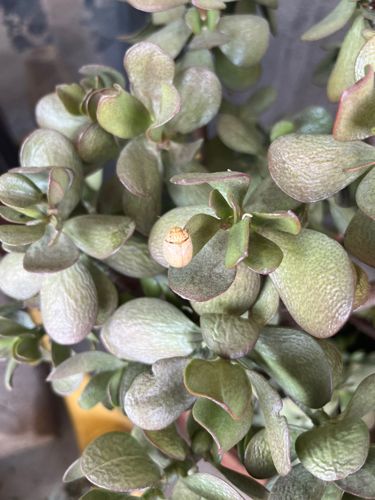Mealybug
Scientific Name: Pseudococcus spp. or Planococcus spp. (general identification, species not discernible from image)
Order & Family: Hemiptera, Pseudococcidae
Size: Typically 1-6 mm (.04-.24 inches) in length, often covered in a white, waxy, cottony coating.

Natural Habitat
Mealybugs are commonly found in warm climates and greenhouses. They infest a wide range of plants, both indoors and outdoors, including succulents, citrus trees, ferns, and many common houseplants. They prefer protected and concealed locations on plants.
Diet & Feeding
Mealybugs feed on plant sap by inserting their stylets (piercing-sucking mouthparts) into the plant tissue. They extract sap from a wide variety of plants, including ornamental plants, fruits, vegetables, and houseplants. They excrete a sticky substance called honeydew, which can lead to the growth of sooty mold.
Behavior Patterns
Mealybugs are typically slow-moving and tend to cluster in protected areas on plants, such as leaf axils, undersides of leaves, and stem joints. They lay eggs in cottony masses, and nymphs (crawlers) are mobile once hatched, seeking new feeding sites. Their presence often indicates an overwatered or stressed plant, which is an ideal breeding ground. They reproduce quickly, especially in warm, humid conditions.
Risks & Benefits
Risks: Mealybugs are significant agricultural and horticultural pests. Their feeding can lead to stunted growth, yellowing leaves, leaf distortion, and premature leaf drop. Heavy infestations can weaken and eventually kill plants. The honeydew they produce attracts ants and promotes the growth of sooty mold, which blocks light and reduces photosynthesis. Benefits: From a human perspective, there are no direct benefits of mealybugs. In nature, they can be a food source for natural predators like ladybugs, lacewings, and parasitic wasps.
Identified on: 9/3/2025